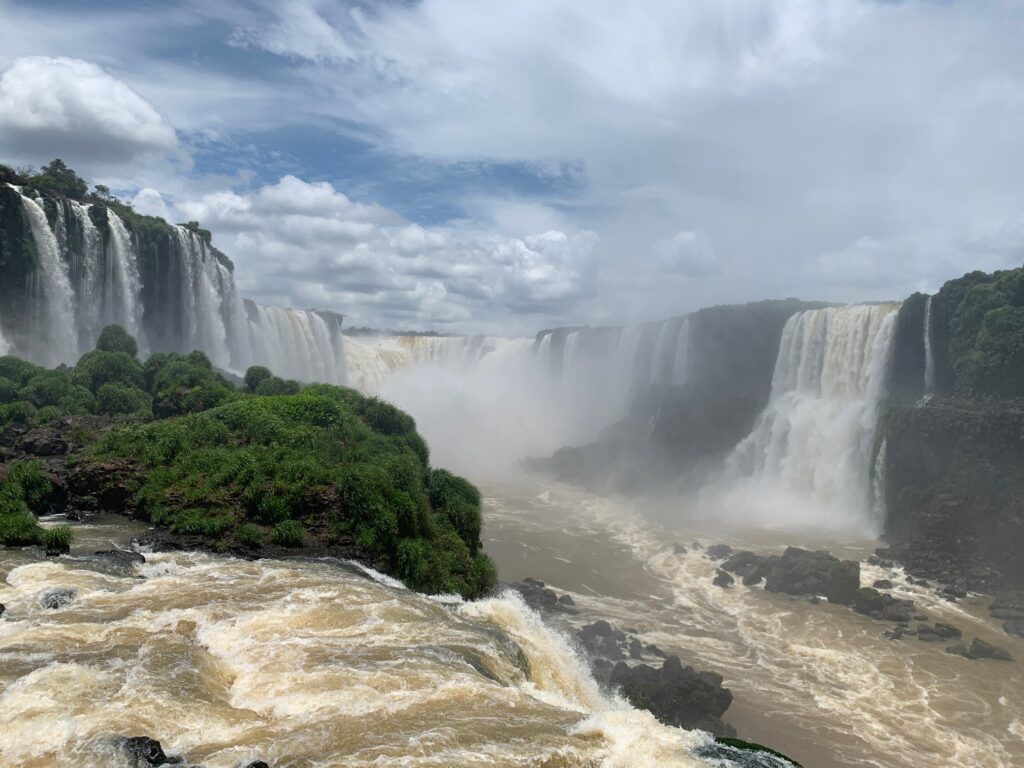Devil’s Throat from the viewing platform in Parque Nacional do Iguacu in Brazil
Highlights
Iguazu Falls is the largest waterfall system in the world. This waterfall system is located at the border between Argentina and Brazil. Access to the waterfalls are through the national parks in each country. We visited each national park and liked the Brazil side better as it offered panoramic views and has access points that get visitors close to the falls.
Our host said it is impossible to see both national parks in one day. Both parks open around 8 AM and admit the last visitor around 4 PM. In our experience, it is better to dedicate a day to each park to avoid a hurried pace. But if you only have time to visit one, it would definitely be the Brazilian side.
Time of Visit: December 2023 – January 2024
Duration of Visit: Three nights
When to Visit
You can visit Iguazu Falls at any time of the year. It just depends on what you are willing to live with. Weather-wise, the best time to go is during the winter when the temperature is comfortable. This is around July through September according to the locals we talked to. However, good weather equals lots of people.
Our taxi driver said that October’s temperature is still comfortable but it is the rainiest month.
We visited Iguazu Falls during the summer. It was hot and humid. People were sweating. Locals said that summer temperatures can be in the 40s (degree C) and sometimes 50s.
We visited Iguazu Falls on the Brazil side on New Year’s eve and the Argentinian side on New Year’s day. There was a huge difference in crowd size between the two. Brazil had much more visitors compared to Argentina (see later sections).
Where to Stay
You can either stay in Brazil or Argentina. We stayed in Puerto Iguazu, Argentina and did a day trip to the Brazil side. We hired a taxi for the day to take us to Brazil and back. The drive took about an hour, including the border crossing. Our driver charged 35K ARS for the round trip travel. We saw buses that left from the city center of Puerto Iguazu that had signs showing “Catarata Brazil”.
There is plenty of lodging on the Puerto Iguazu. We stayed at Toucan Lodge which was actually a good value for what they were charging. Just don’t expect it to be the Holiday Inn.
How Much Time Needed
We stayed three nights. This is the minimum in our opinion. We arrived in the evening so that was one night. We saw the falls on the Brazil side on our second night and on the Argentina side on our third night.
If your flight comes in early in the morning, you may be able to get away with just two nights. But that would mean everything would have to fall into place like clockwork. On your first night, you could conceivably drop your luggage at your accommodation and head over in the afternoon to one of the parks before it closes.
How to See the Falls
Brazilian Side
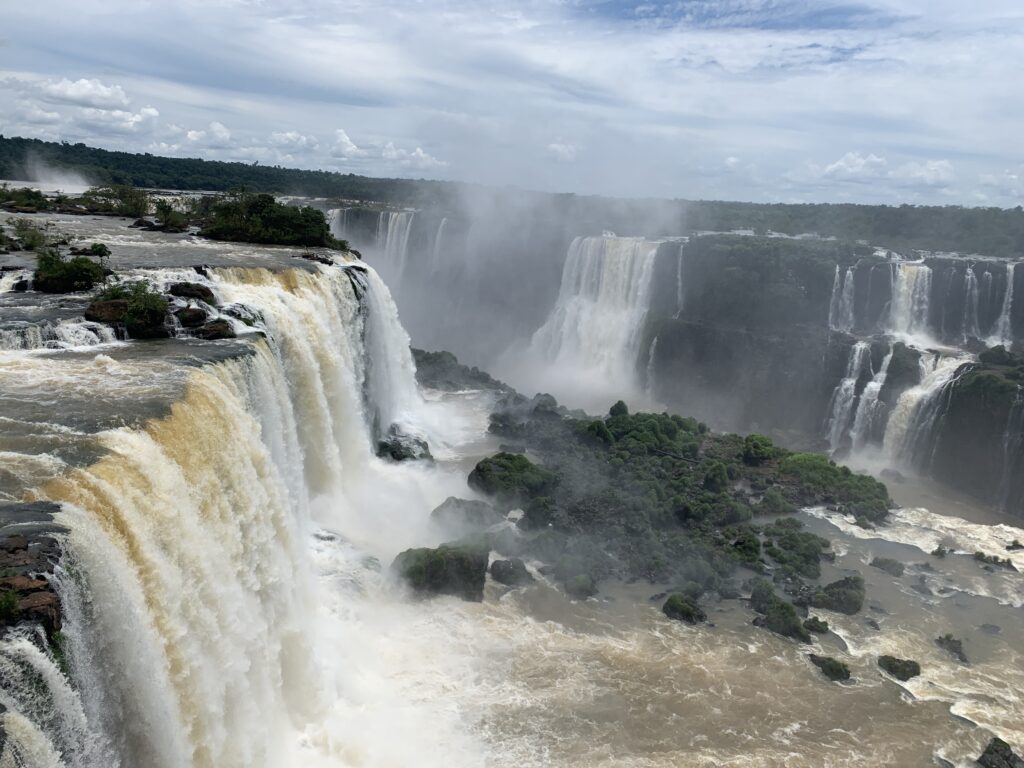

Brazil’s side is more desirable to see without question. You get a closer look at one of the major falls plus a panoramic view of the waterfall system.
Operating Hours
The park has different operating hours, depending on the time of year. The normal operating time is 8:30 AM to 3:30 PM. During holidays, it is open a little longer by admitting people between 8 AM and 4 PM.
Purchasing Entry Tickets
Entry tickets cost 100 Real (about $20 USD) per person during our visit. The park has entry time slots, running every 30 minutes. The entry time slots are for boarding the shuttle bus. It took us about an hour to get to the park entrance from our accommodation in Puerto Iguazu, Argentina. We arrived at the park around 10 AM and there were throngs of people already. We were lucky to get a 10:30 time slot. Entrance tickets can be purchased from a manned booth (cash only) or from a kiosk (credit card only). The kiosk was fairly simple to use. Just pick the country, follow the prompts and select the time slot you want.
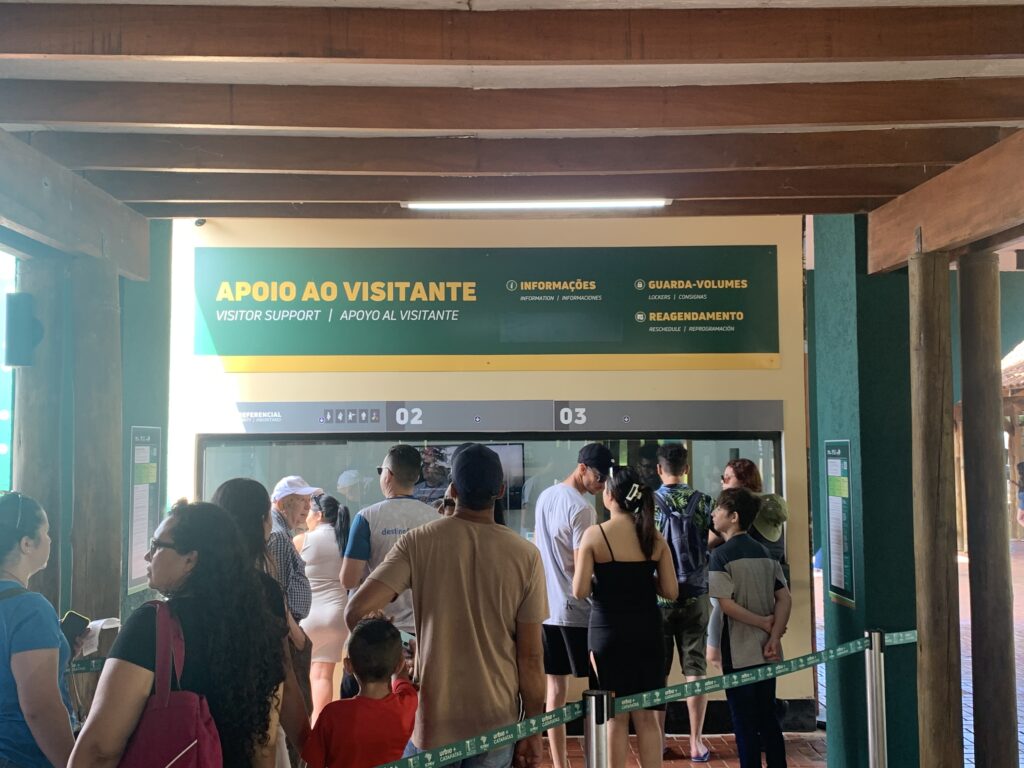

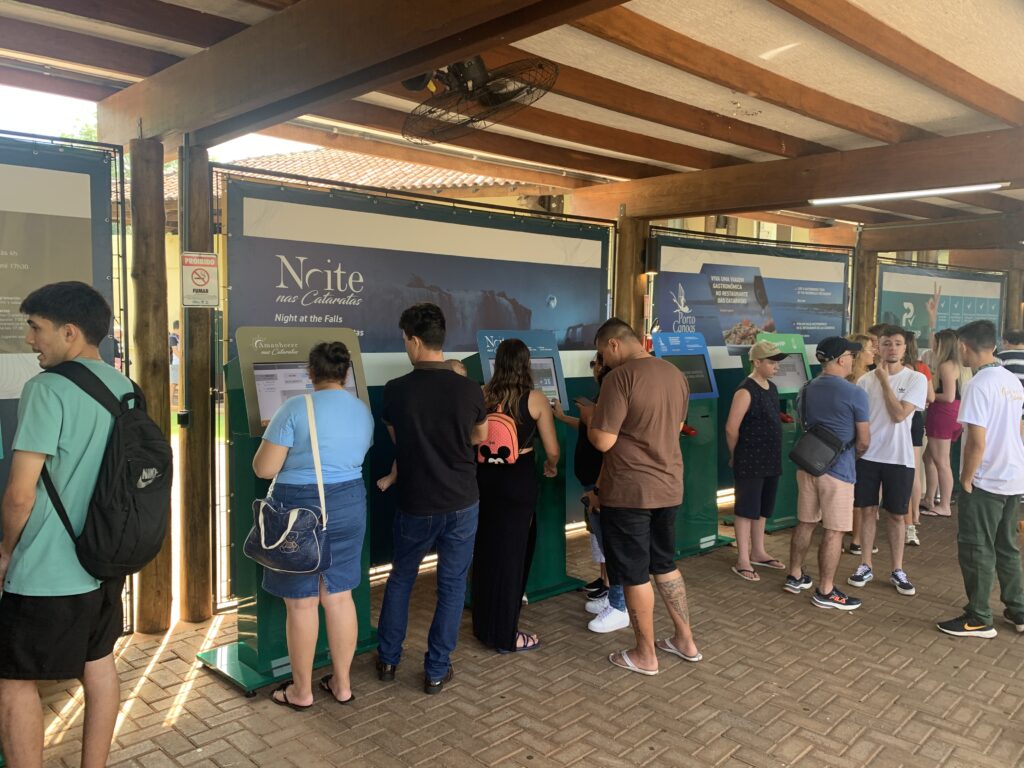

Once you have your tickets, pay attention to the park employees manning the bus loading waiting area. They normally let people fall in line about 15 minutes before the entry time slot.
Shuttle System
Brazil’s Parque Nacional do Iguacu buses visitors from the park entrance to the waterfall viewing areas. The bus will make three stops. The first stop is for people who paid to ride the boat and see the falls from the river. The second stop is the start of the 1.5 kilometer path that provides views of the waterfalls on the Argentina side. The path ends at the panoramic viewing area which is the third and final stop. This is where you can board the bus to return to the park entrance.
Avoiding Crowds
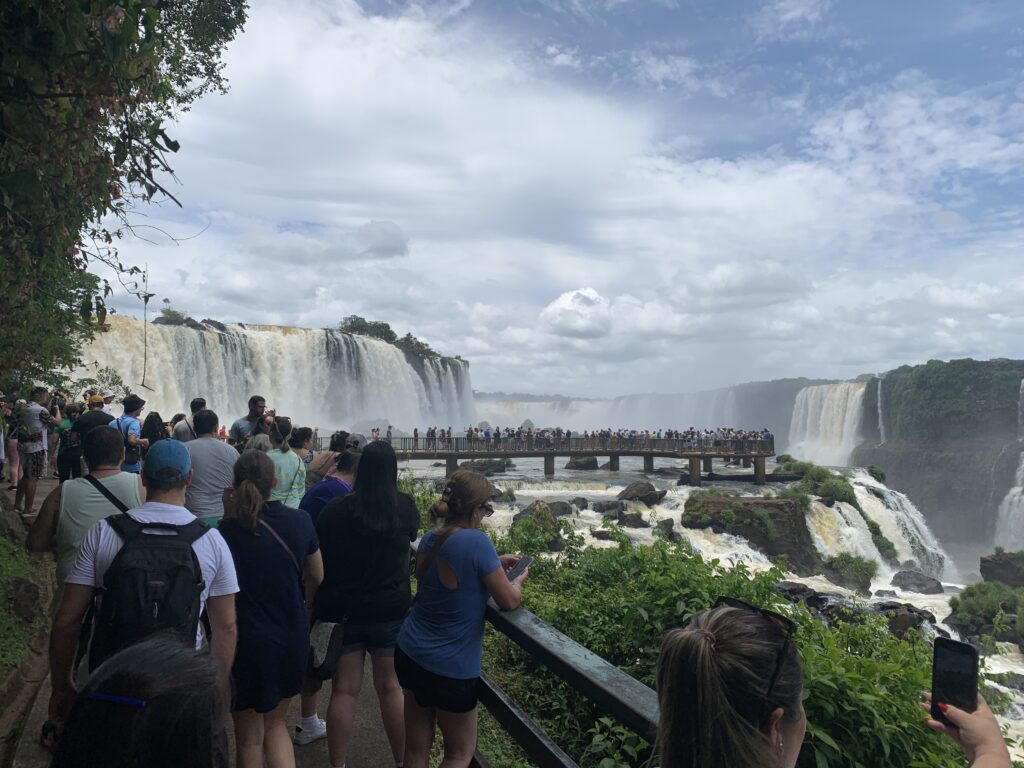

There are two ways of avoiding the crowds so you can get less crowded shots. One is to get the very first time slot, sprint out of the shuttle bus and head straight to the viewing platform. The second way is to go before closing time when most of the visitors are heading out. We were told by park employees that visitors must leave the park two hours after the last time slot. So if the last time slot was 4 PM, you should leave the park by 6 PM.
We spent about three hours in the park. There was a lot of waiting for a break in the line of people walking so we could get a clear shot. Conceivably, if you get in at 3PM, you should have enough time to enjoy the park without having to fight the crowd for capturing that most precious shot.
Below are comparison photos at the bus waiting area of the 10:30 AM and 3:30 PM entry slots.
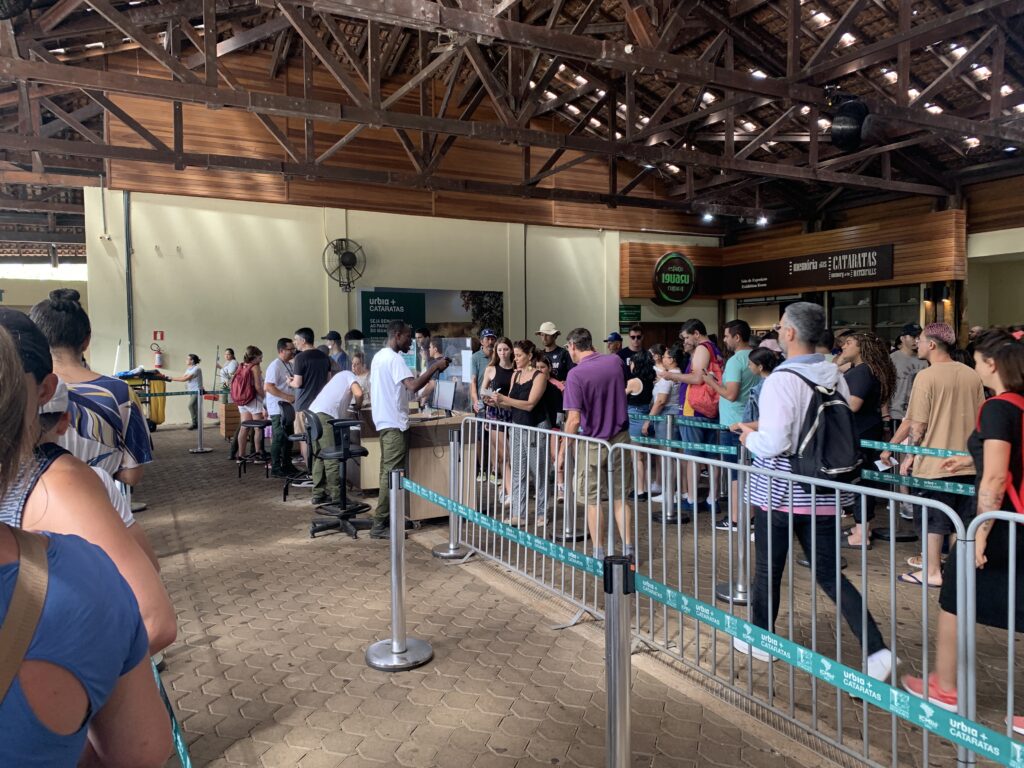

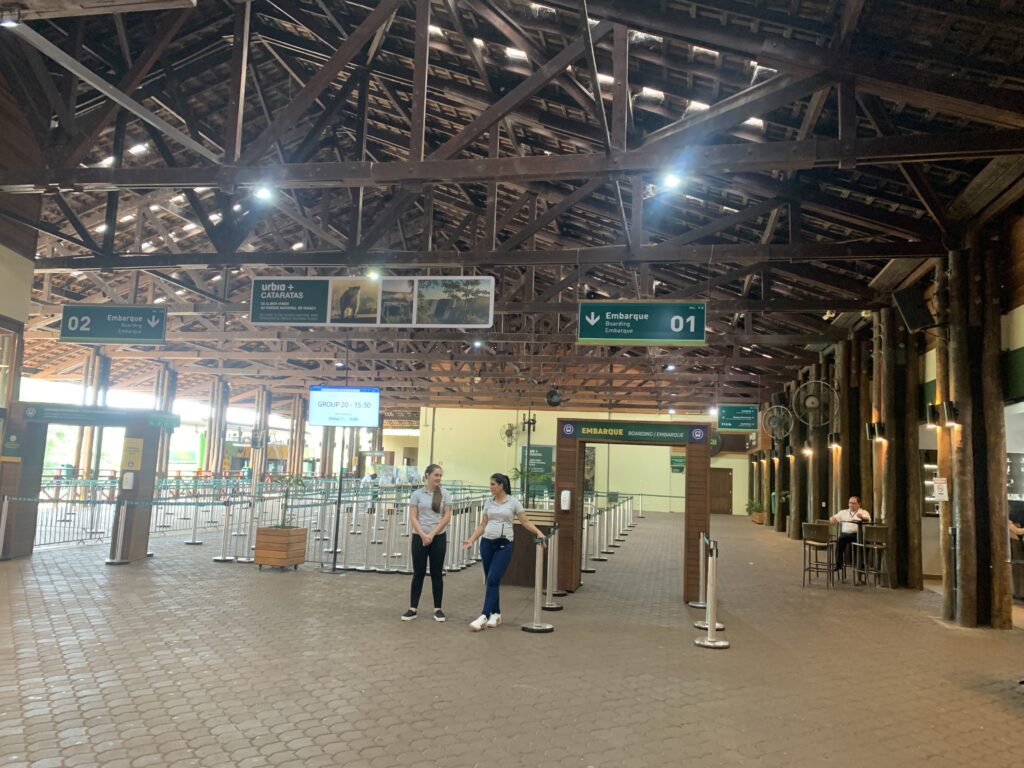

What Else to Expect
Expect to get wet from the fall’s mist at the panoramic viewing area. However, this was just a short section of the viewing platform. You would not come out soaking wet but you will definitely feel it. It was actually refreshing to be misted.
We saw a coati, some lizards and a unique small butterfly that had the number 8 on its wings. Feeding animals is prohibited. Smoking within the park is also prohibited.
Food and drinks are available at the park entrance and at the panoramic viewing area (3rd shuttle bus stop).
Argentina Side
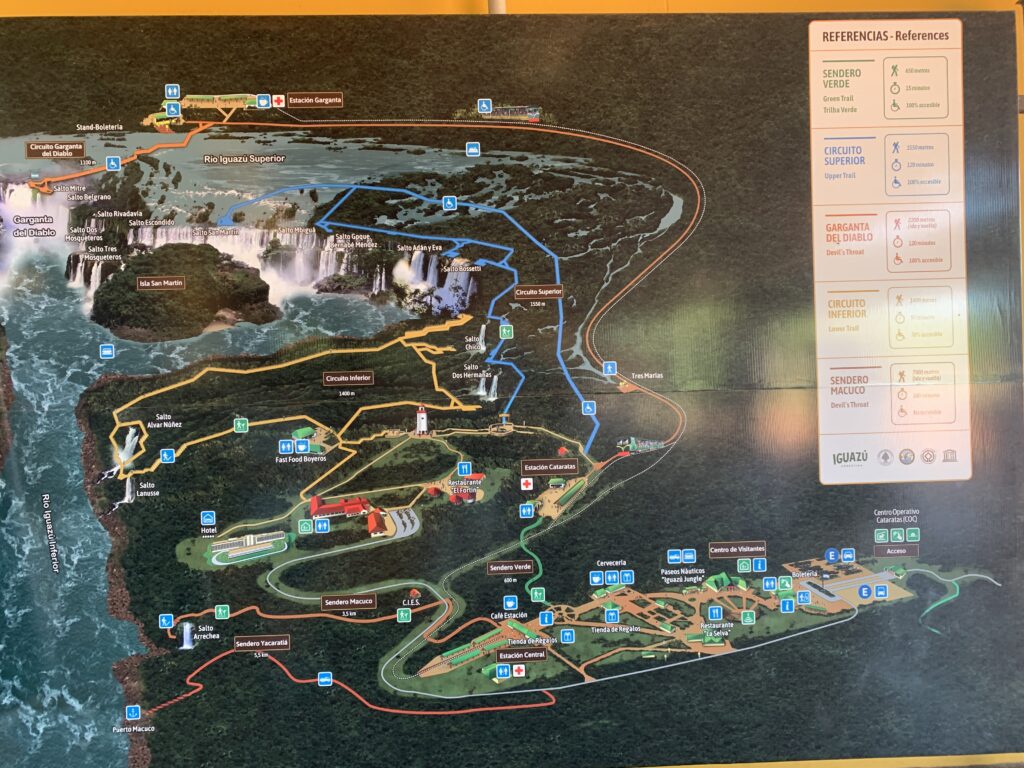

Argentina’s side is not as impressive compared to the views from the Brazil side. It is still worth seeing in our opinion despite the entry fee costing a little more compared to Brazil. We saw some monkeys, lots of coati and dealt with less people.
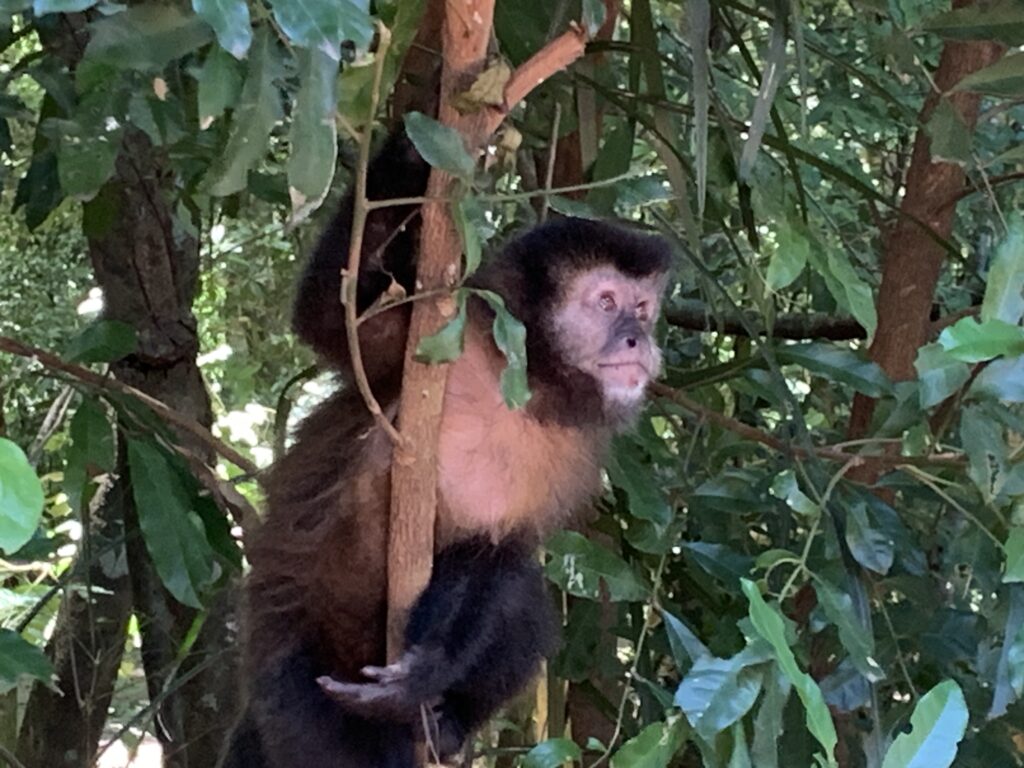

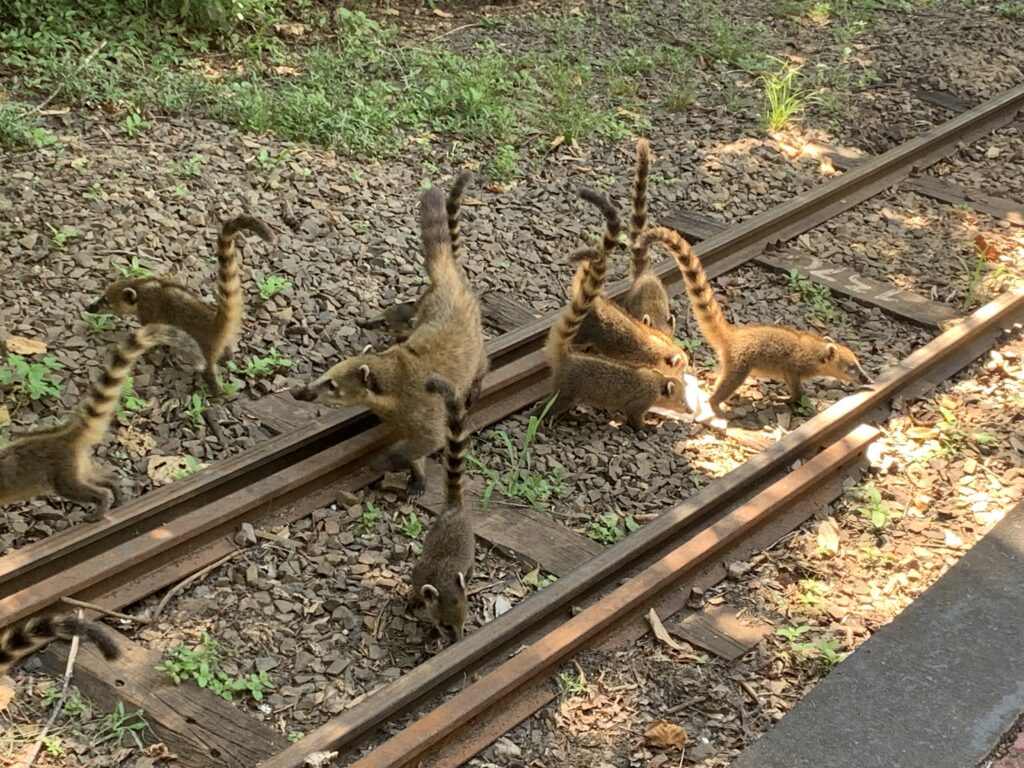

Operating Hours
The park’s operating hours are similar to Brazil. It opens around 8 AM and admits the last visitor around 4 PM. Visitors must leave the park around 6 PM.
Purchasing Entry Tickets
Purchasing entry tickets was pretty straightforward. There are manned counters where you can pay either with a credit card or with cash. The entry fee in 2024 was 20K ARS (about $23.5 USD) per person.
Shuttle System
Argentina uses a narrow gauge train to transport visitors to the park’s interior. There are just two train stations, one at each end of the line. The boarding train station is about a 300 meters walk from the park entrance. It is about a five minute train ride to get to the end of the line. The train runs every 30 minutes. Only one train goes back and forth shuttling visitors.
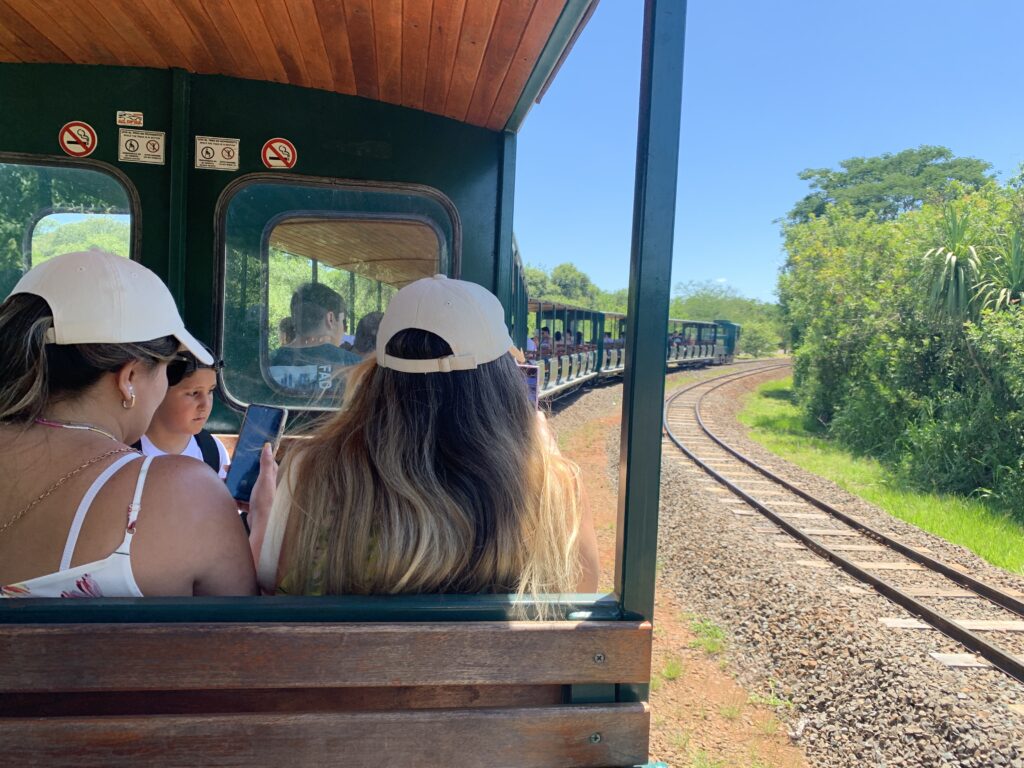

You will need a boarding ticket to board the train. The boarding ticket would show the boarding time. To get the boarding ticket, you have to show your park entry tickets to one of the attendants at the train station. They will then print the boarding ticket. So to minimize the waiting time to board the train, walk immediately to the train station to get your boarding ticket.
Avoiding Crowds
Similar to Brazil, you can avoid the crowds by being early or being late. However, the number of visitors on the Argentinian side was way less than the Brazilian side such that it was not a problem to take photos without having to wait long for people to clear out.
What Else to Expect
There were two viewing walkways that were open during our visit, called the Circuito Inferior and the Circuito Superior. Parts of both walkways were closed due to missing walkway sections or sections that were deemed unsafe. We were not able to get to the base of Salto Alvar Nuñez on the Circuito Inferior and Salto San Martin on the Circuito Superior as the walkway leading to these viewpoints were closed.
The waterfall views from the walkways are not as dramatic as in the Brazilian side. Basically, the falls are either far away or you are on top of the falls so you do not really see the thunderous cascade.
There was only one nice viewpoint and it was on the inferior walkway. We spent a long time watching the tour boats maneuver the rapids to take visitors to the base of the Salto Mbigua.
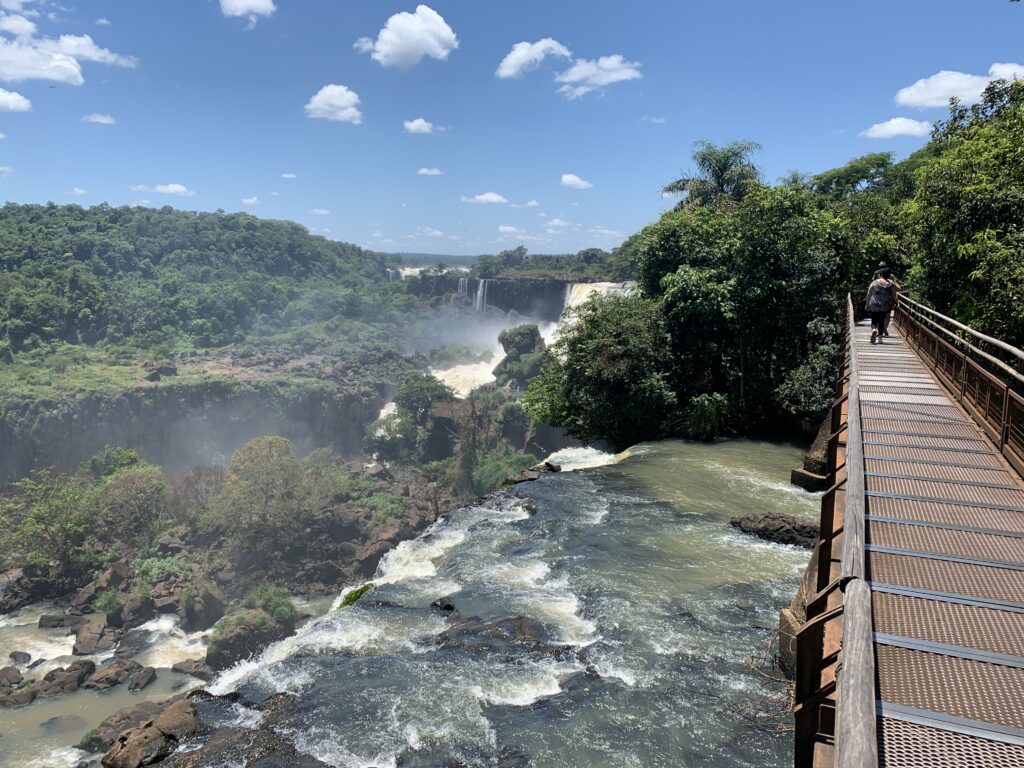

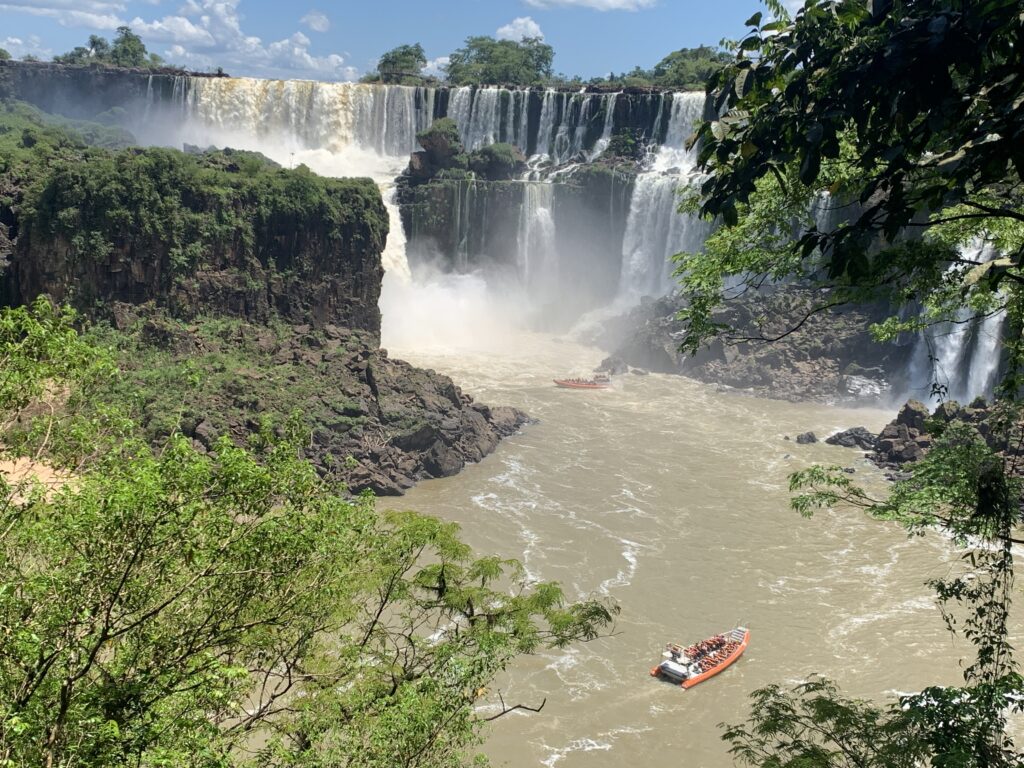

Food and drinks are available at both train stations and at the inferior walkway trailhead.
Summary
Iguazu Falls is a large network of waterfalls located at the border between Argentina and Brazil. Seeing the falls from the Brazilian side is definitely more exhilarating because it provides a panoramic view and has walkways that allow visitors to get close to the falls. The Argentina side is not as dramatic but still worth the visit as it provides views of the waterfalls from a different perspective.
The falls are within the national parks of each country that bears the same name. Visitors are shuttled from the park entrance to the start of the walking paths to view the waterfalls. Entry tickets can be bought with cash or credit card at the park entrance. Visitors must select the shuttle boarding time during ticket purchase at the Brazil side and are assigned on a first come, first serve basis at the Argentinian side.
Brazil had more visitors compared to Argentina. To beat the crowds, either be the first to be at the park or arrive late when most visitors are gone. If arriving late, just be aware of the last admission time (around 4 PM) and the closing time (around 6PM).
Visiting Iguazu Falls during the summer was hot and humid. Locals told us that winter has more favorable temperature but has more visitors.
We have seen many waterfalls throughout the years. But one thing is for sure that Iguazu Falls is like no other. It would definitely be etched in our memories for a long time.

